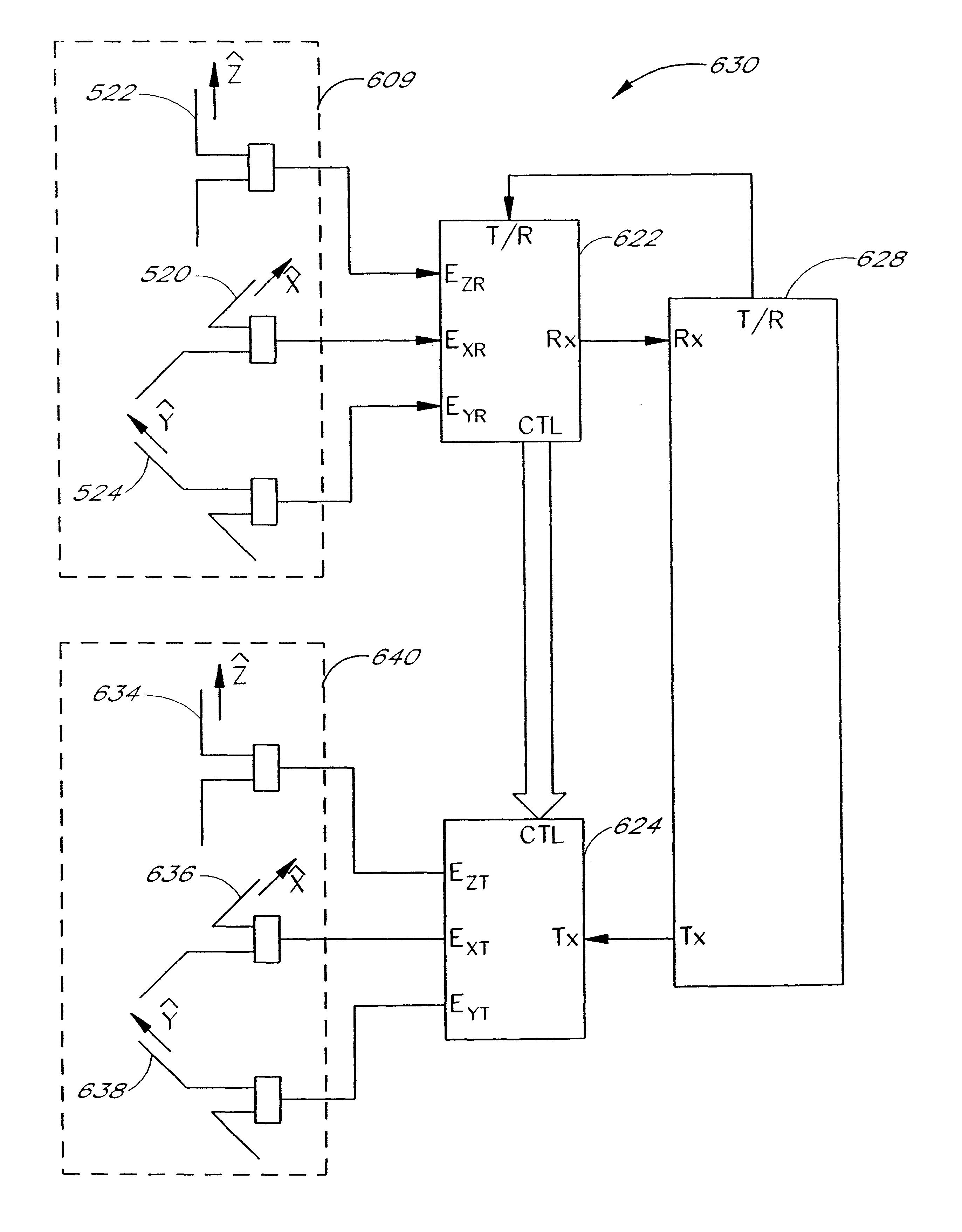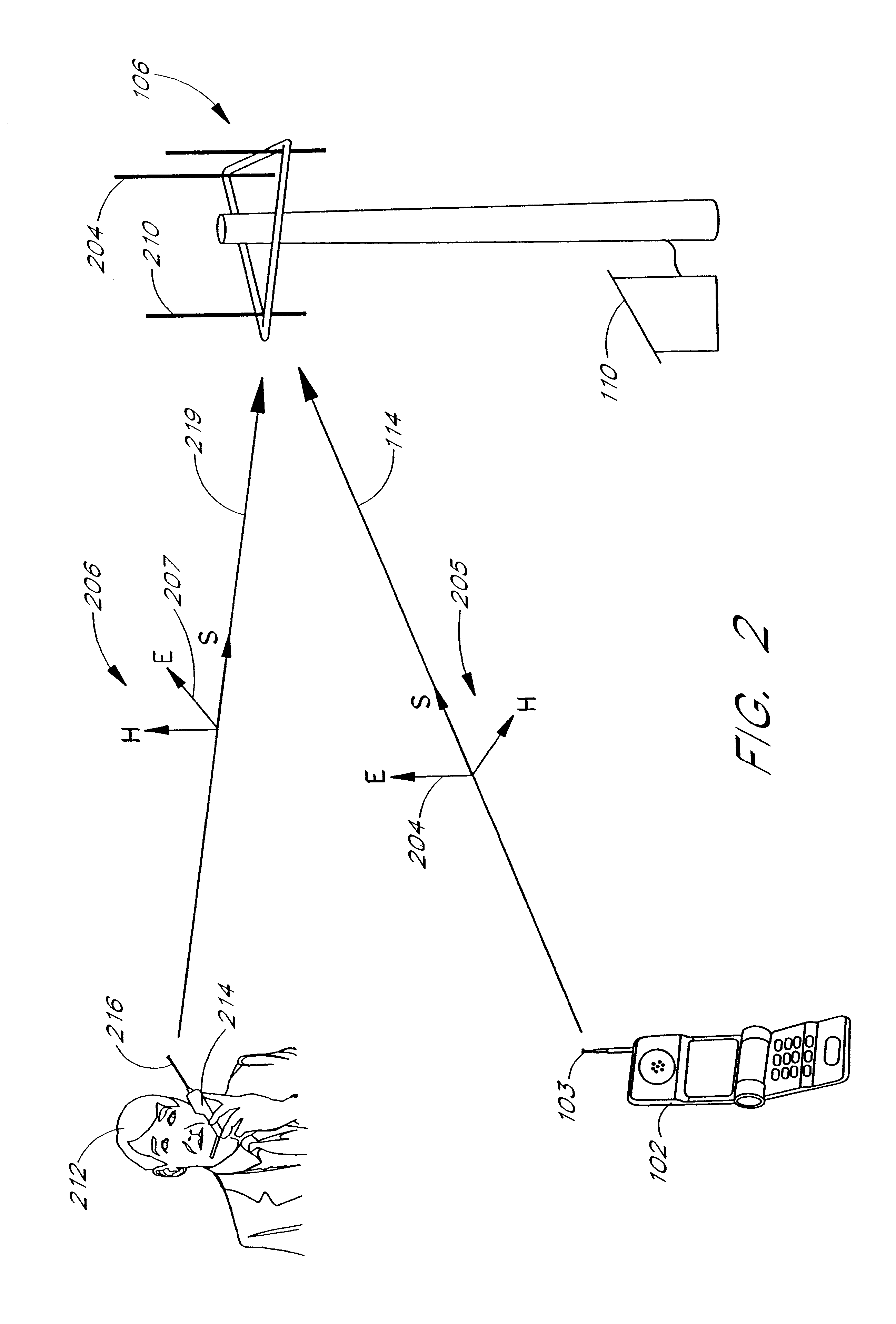Unfortunately, ideal conditions are rarely found in the real-world and thus the EM
waves that propagate from the transmitting antenna to the receiving antenna are often disturbed by external influences.
These disturbances often reduce the strength of the EM
waves that reach the receiving antenna, and thus impair the performance of the
communications system.
The impairment caused by
signal fading can include reduced range, higher
noise, higher error rates, etc.
Fading is usually caused by destructive interference of multipath waves.
However, the strength of the EM wave produced by the transmitting antenna is usually limited by various factors, including, government regulations, the size / cost / weight of the
transmitter, the size / cost / weight of the transmitting antenna, and the power available to operate the
transmitter.
The waves arriving at the receiving antenna along different paths will often interfere with each other, such that a wave arriving from a first path will tend to cancel a wave arriving from a second path.
Antenna position diversity is rarely used in handheld units because of the size, weight, and cost associated with multiple receiving antennas spaced several wavelengths apart.
This is clearly impractical for a handheld telephone, but very practical for a base station antenna mounted on a large
tower.
In some locations, such as Japan, regulatory constraints favor the less effective technique of antenna-switching rather than
maximal ratio combining.
If one competitor is allowed to focus EM waves in one direction, then a nearby base station operated by another competitor, and servicing mobile users along the same
radiation path, would experience interference.
By reducing the maximum power available to each
antenna element in an array of antenna elements, the total
power output of the array is limited.
This, unfortunately, greatly reduces the effectiveness of
transmit diversity using antenna combining by up to 3 dB for a two-antenna system, and up to 6 dB for a four-antenna system.
Polarization mismatch
fading occurs when the polarization of the EM wave that arrives at the receiving antenna does not match the polarization of the receiving antenna.
For example, polarization mismatch
fading is common when using a mobile
handset because different users will orient the
handset at different angles.
Unfortunately, the wireless
handset is rarely held so that the antenna is vertical.
Polarization mismatch fading often occurs when the user orients the handheld unit so that the antenna is not vertical.
This polarization mismatch fading sometimes goes unnoticed because most communication systems are designed with a
power budget that provides a large excess
power margin.
By holding the antenna at less than optimal orientation, the user is merely unconsciously using up some of the
power budget designed into the system.
However, at the far fringe of a reception area, most of the
power budget is used up just getting the EM waves from the transmitter to the
receiver.
However, this study also found that in complex, non-line-of-
sight (e.g., multipath) environments, the difference between the
horizontal and vertical polarization
signal strengths can be small.
Likewise, cost, antenna switching losses, and antenna separation considerations tend to disfavor the incorporation of multiple antennas into the handset.
Unfortunately, in the receive-only context, perceived gains have been seen, but they are not sufficient to justify receive-only diversity in many applications. M. Nakano, T. Satoh, and H. Arai, "Up Link
Polarization Diversity and
Antenna Gain Measurement of a Hand-Held Terminal", IEEE Antennas and Propagation Society International Symposium, Jun. 18-23 1995, vol.
In particular, Turkmani et al. found that a 45-degree oriented handset induced mismatch losses averaging 6 dB, while using two vertical antennas for receive-only antenna-position diversity.
Although, performance of a communication system can be improved by using a receive-only polarization-diversity, the gains are modest and may not justify the additional cost and complexity of implementation.
Moreover, implementing receive-only diversity in the base station only improves the communication path from the handset to the base station (the uplink path).
Polarization-diversity in the base station receiving antenna does nothing to improve the communication path from the base station to the handset unit (the downlink path).
In many communications systems, there is little benefit to increasing the uplink performance if downlink performance is not similarly increased, and vice versa.
Unfortunately, as discussed above, implementing
antenna diversity in the handset unit is typically not practical due to problems related to cost, weight, size, and complexity.
However, if the
noise is loud in relation to the message, the user 104 will have difficulty extracting the message from the
noise.
However, a SNR of 0 dB (unity) is often considered to be a practical lower desired limit for real-world systems.
Analog communications systems tend to fail gradually as the SNR drops close to unity.
Unfortunately, government regulations typically limit the strength of the EM wave radiated by the base station 110.
Here again, government regulations often limit the maximum radiated power.
Moreover, other power considerations, such as battery drain, often limit the EM
signal strength that can be produced by the handset 102.
 Login to View More
Login to View More  Login to View More
Login to View More 


